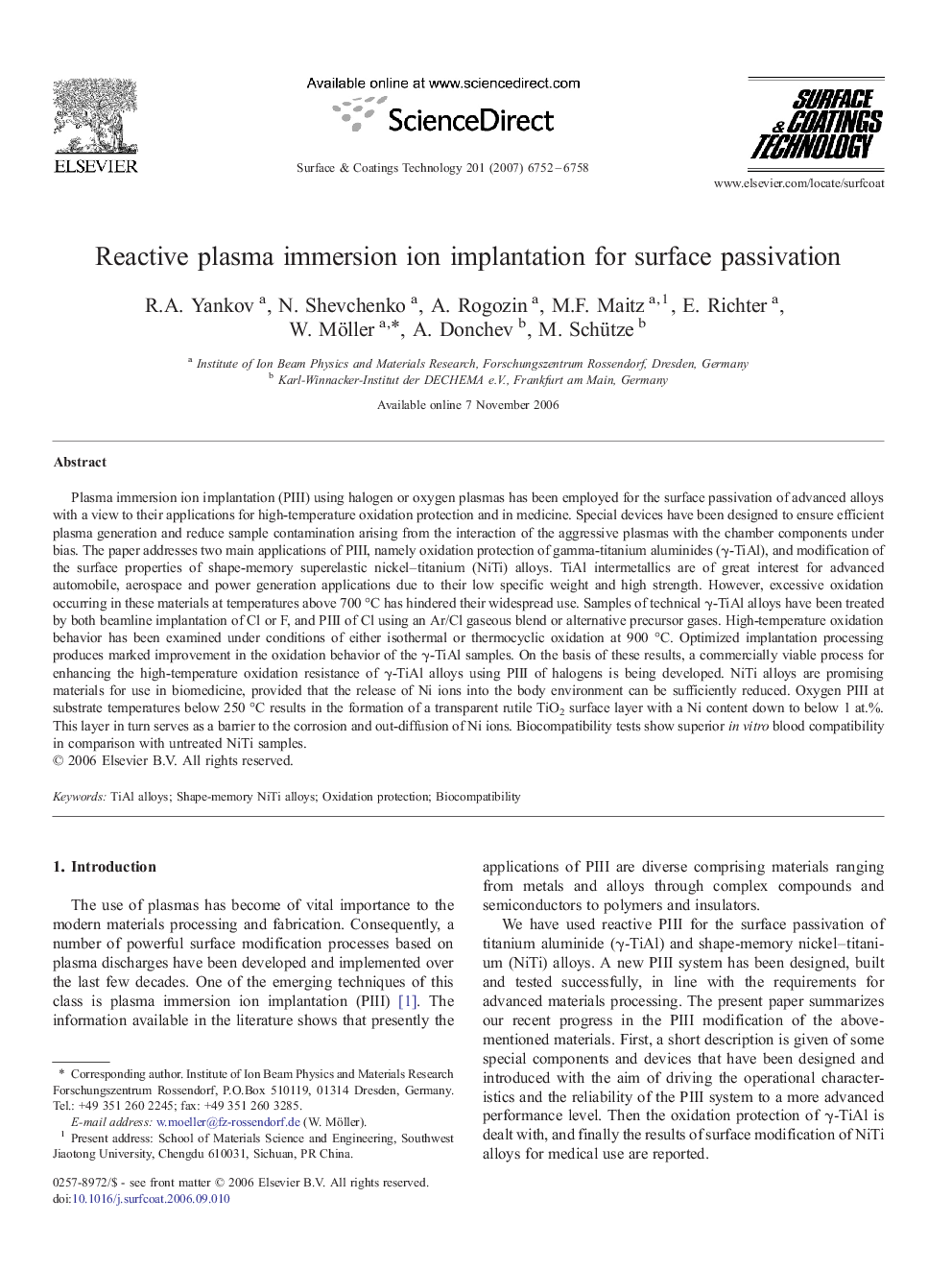| کد مقاله | کد نشریه | سال انتشار | مقاله انگلیسی | نسخه تمام متن |
|---|---|---|---|---|
| 1660859 | 1008413 | 2007 | 7 صفحه PDF | دانلود رایگان |

Plasma immersion ion implantation (PIII) using halogen or oxygen plasmas has been employed for the surface passivation of advanced alloys with a view to their applications for high-temperature oxidation protection and in medicine. Special devices have been designed to ensure efficient plasma generation and reduce sample contamination arising from the interaction of the aggressive plasmas with the chamber components under bias. The paper addresses two main applications of PIII, namely oxidation protection of gamma-titanium aluminides (γ-TiAl), and modification of the surface properties of shape-memory superelastic nickel–titanium (NiTi) alloys. TiAl intermetallics are of great interest for advanced automobile, aerospace and power generation applications due to their low specific weight and high strength. However, excessive oxidation occurring in these materials at temperatures above 700 °C has hindered their widespread use. Samples of technical γ-TiAl alloys have been treated by both beamline implantation of Cl or F, and PIII of Cl using an Ar/Cl gaseous blend or alternative precursor gases. High-temperature oxidation behavior has been examined under conditions of either isothermal or thermocyclic oxidation at 900 °C. Optimized implantation processing produces marked improvement in the oxidation behavior of the γ-TiAl samples. On the basis of these results, a commercially viable process for enhancing the high-temperature oxidation resistance of γ-TiAl alloys using PIII of halogens is being developed. NiTi alloys are promising materials for use in biomedicine, provided that the release of Ni ions into the body environment can be sufficiently reduced. Oxygen PIII at substrate temperatures below 250 °C results in the formation of a transparent rutile TiO2 surface layer with a Ni content down to below 1 at.%. This layer in turn serves as a barrier to the corrosion and out-diffusion of Ni ions. Biocompatibility tests show superior in vitro blood compatibility in comparison with untreated NiTi samples.
Journal: Surface and Coatings Technology - Volume 201, Issue 15, 23 April 2007, Pages 6752–6758